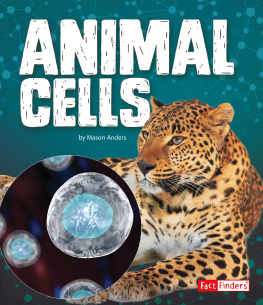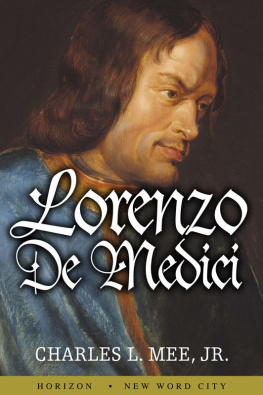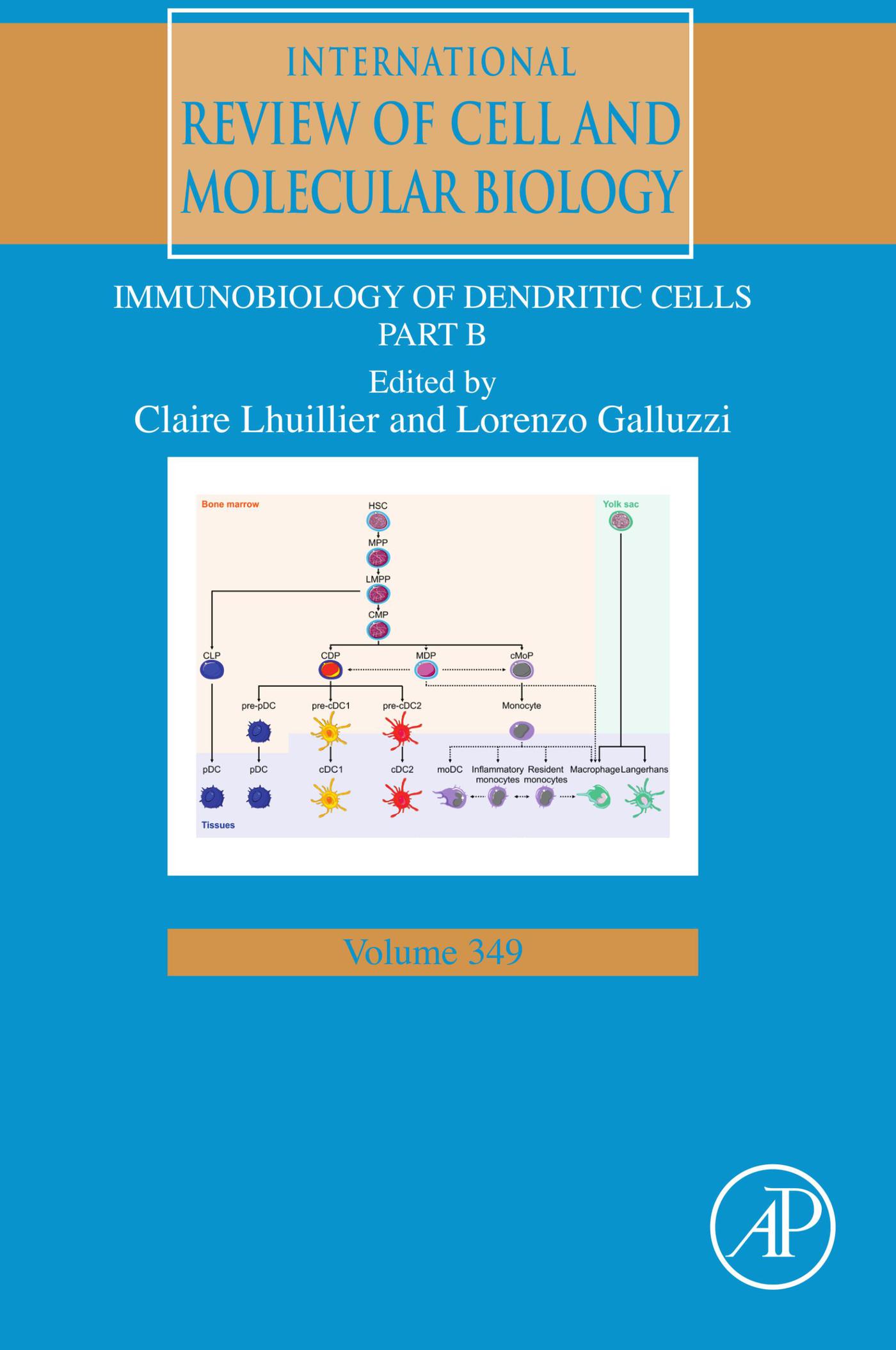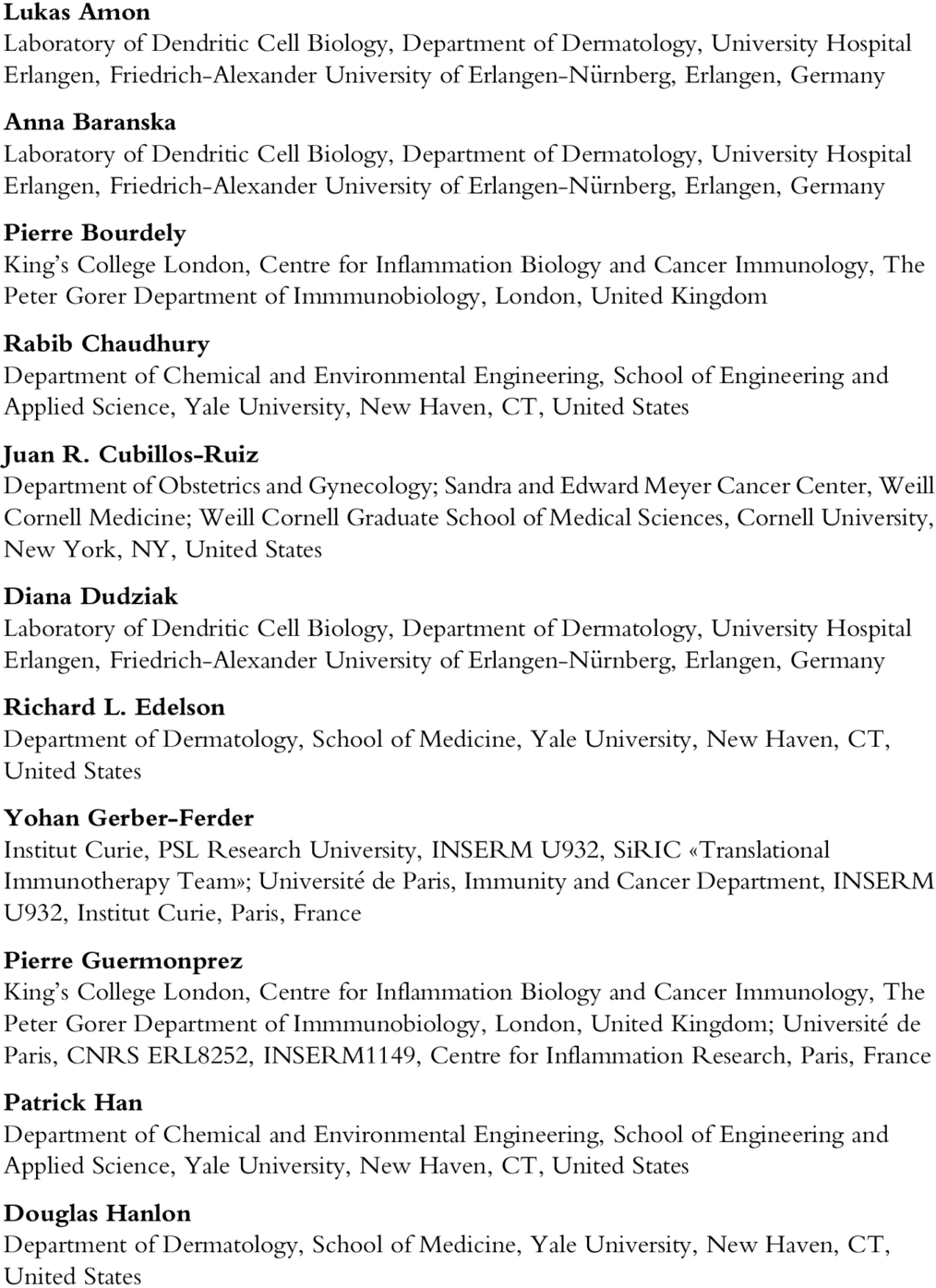Department of Radiation Oncology, Weill Cornell Medical College, New York, NY, United States
b Sandra and Edward Meyer Cancer Center, New York, NY, United States
c Department of Dermatology, Yale School of Medicine, New Haven, CT, United States
d Universit de Paris, Paris, France
Keywords
Antigen cross-presentation; BATF3; DC-based vaccines; Phagocytosis; Toll-like receptors; Type I interferon
Dendritic cells (DCs) are a population of myeloid cells that play a key role in the initiation of adaptive immune responses, a core immunological activity that reflects their proficiency at presenting extracellular antigens to nave T cells and earned them the name of sentinels of the immune system ().
The phenotypic and functional heterogeneity of DCs became apparent early after their discovery ().
The ability of DCs to induce robust immune responses is highly dependent on their maturation status (). The precise mechanisms whereby different DCs subsets orchestrate T cell responses remain to be fully elucidated.
From a functional perspective, the cDC1 subset is specialized at cross-presenting microenvironmental antigens on MHC class I molecules to CD8+ T cells in the context of type I interferon (IFN) secretion ().
Despite their fundamental role in early responses against viral pathogens, DCs can also contribute to the etiology of various human disorders. For instance, human immunodeficiency virus type 1 (HIV-1) highjacks DC functions in support of viral replication, distal dissemination, and cell-to-cell transmission ().
Not surprisingly, DCs have attracted considerable attention as potential targets for the development of novel therapeutic interventions against a variety of human disorders. On the one hand, infusion of tolerogenic DCs as induced by specific pharmacological agents, growth factors, or cytokines may be beneficial in the context of allergic disorders, autoimmune diseases, and transplant rejection. Conversely, vaccines based on autologous DCs loaded with tumor-associated antigens in the context of robust immunostimulatory signals have demonstrate significant anticancer activity in both preclinical and clinical settings ().
In Immunobiology of Dendritic Cells (a special issue of the International Review of Cell and Molecular Biology series) worldwide recognized experts in the field provide an overview of ontological, biological, and functional DCs features in the context of human pathophysiology. Each of the 12 chapters of Immunobiology of Dendritic Cells critically discusses the key role of DCs at the interface between innate and adaptive immunity from a unique mechanistic or therapeutic perspective. The book (which consists of two parts, part A and part B) is equally addressed to expert researchers who may be interested in acquiring in-depth insights into the key role of DCs at the interface between innate and adaptive immunity, and to neophytes of this expanding field of translational investigation.
Acknowledgments
C.L. is supported by the American Association for Cancer Research triple-negative breast cancer fellowship. L.G. is supported by a Breakthrough Level 2 grant from the US DoD, Breast Cancer Research Program (BRCP) [#BC180476P1], by a startup grant from the Department of Radiation Oncology at Weill Cornell Medicine (New York, USA), by industrial collaborations with Lytix (Oslo, Norway) and Phosplatin (New York, USA), and by donations from Phosplatin (New York, USA), the Luke Heller TECPR2 Foundation (Boston, USA) and Sotio a.s. (Prague, Czech Republic).
References
Akira S., et al. Pathogen recognition and innate immunity. Cell. 2006;124:783801.
Alcantara-Hernandez, M. et al. (2017) High-dimensional phenotypic mapping of human dendritic cells reveals interindividual variation and tissue specialization. Immunity 47, 10371050 e1036.
Allen C.E., et al. Langerhans-cell histiocytosis. N. Engl. J. Med. 2018;379:856868.
Bachem A., et al. Superior antigen cross-presentation and XCR1 expression define human CD11c + CD141 + cells as homologues of mouse CD8 + dendritic cells. J. Exp. Med. 2010;207:12731281.
Banchereau J., et al. Immunobiology of dendritic cells. Annu. Rev. Immunol. 2000;18:767811.
Barry K.C., et al. A natural killer-dendritic cell axis defines checkpoint therapy-responsive tumor microenvironments. Nat. Med. 2018;24:11781191.
Chakraborty M., et al. Irradiation of tumor cells up-regulates Fas and enhances CTL lytic activity and CTL adoptive immunotherapy. J. Immunol. 2003;170:63386347.
Cheever M.A., Higano C.S. PROVENGE (Sipuleucel-T) in prostate cancer: the first FDA-approved therapeutic cancer vaccine. Clin. Cancer Res. 2011;17:35203526.
Collin M., Bigley V. Human dendritic cell subsets: an update. Immunology. 2018;154:320.
den Haan J.M., et al. CD8(+) but not CD8() dendritic cells cross-prime cytotoxic T cells in vivo. J. Exp. Med. 2000;192:16851696.
Desch A.N., et al. Dendritic cell subsets require cis-activation for cytotoxic CD8 T-cell induction. Nat. Commun. 2014;5:4674.
Devi K.S., Anandasabapathy N. The origin of DCs and capacity for immunologic tolerance in central and peripheral tissues. Semin. Immunopathol. 2017;39:137152.
Dubois H., et al. Nucleic acid induced interferon and inflammasome responses in regulating host defense to gastrointestinal viruses. Int. Rev. Cell Mol. Biol. 2019;345:137171.
Ferlazzo G., Moretta L. Dendritic cell editing by natural killer cells. Crit. Rev. Oncog. 2014;19:6775.
Galluzzi L., et al. Immunogenic cell death in cancer and infectious disease. Nat. Rev. Immunol. 2017;17:97111.
Galluzzi L., et al. SnapShot: CGAS-STING signaling. Cell. 2018a;173: 276.e271.
Galluzzi L., et al. The hallmarks of successful anticancer immunotherapy. Sci. Transl. Med. 2018b;10.
Garg A.D., et al. Trial watch: dendritic cell-based anticancer immunotherapy. Oncoimmunology. 2017;6:e1328341.
Harden J.L., Egilmez N.K. Indoleamine 2,3-dioxygenase and dendritic cell tolerogenicity. Immunol. Invest. 2012;41:738764.
Hashimoto D., et al. Dendritic cell and macrophage heterogeneity in vivo. Immunity. 2011;35:323335.
Hildner K., et al. Batf3 deficiency reveals a critical role for CD8alpha + dendritic cells in cytotoxic T cell immunity. Science. 2008;322:10971100.
Kantoff P.W., et al. Sipuleucel-T immunotherapy for castration-resistant prostate cancer.
















